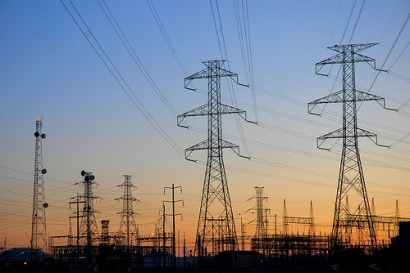
With current trends in the supply and use of energy becoming increasingly untenable – economically, environmentally and socially -- the IEA believes smart grids can play a significant role in enabling nearly all clean energy technologies, including renewables, electric vehicles and energy efficiency.
The report, Smart Grids Technology Roadmap, provides a consensus view from more than 200 government, industry, academia and consumer representatives on the current status of smart grid technologies, and charts a course for expanding their use from today to 2050.
According to the report, the deployment of smart grids would do more than address currentconcerns with existing electricity systems, such as ageing infrastructure and increasing peak demand; they are an important element for expanding the use of a number of low-carbon technologies, such as electric vehicles. But governments need to multiply their efforts.
“We need to see a much more aggressive investment in large-scale regional pilots in order to deploy smart grids at the scale they are needed,” said IEA Executive Director Nobuo Tanaka, speaking in Paris.
“In addition to funding regional pilots, governments need to establish clear and consistent policies, regulations and plans for electricity systems that will allow innovative investment in smart grids,” Tanaka continued. “It will also be vital to gain greater public engagement. This can be done by educating all relevant stakeholders – but especially customers and consumers – about the need for smart grids and the benefits they can offer.”
The report recommends that smart grids play a critical role in the deployment of new electricity infrastructure in developing countries and emerging economies.
As well as enabling more efficient operations, grids can also help to keep downward pressure on the cost of electricity, the report says.
It also outlines the potential for smart grids in rural areas of developing countries further down the line.
“Small ‘remote’ systems -- not connected to a centralised electricity infrastructure and initially employed as a cost-effected approach to rural electrification -- could later be connected easily to a national or regional infrastructure, ” said David Elzinga, the report’s author and an Energy Technology Policy analyst at the IEA.
The report adds that smart grids could be used to get electricity to sparsely populated areas by enabling a transition from simple, one-off approaches to electrification (e.g. battery-based household electrification) to community grids that can then connect to national and regional grids.
The report recommends greater international collaboration in sharing experiences of pilot programmes and in leveraging national investments in the development of required technology.
It also stresses a need to develop common standards between countries that will help optimise and accelerate both the development and deployment of necessary technology while at the same time, reduce costs for all stakeholders; namely governments, industry, and the public.
“Major international collaboration is needed to expand research, development, demonstration and deployment investment in all areas of smart grids – but especially in the development of standards, policies, regulations and business models,” Elzinga said.
For additional information:

